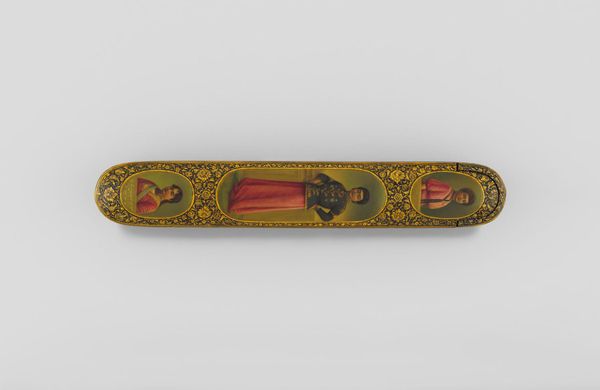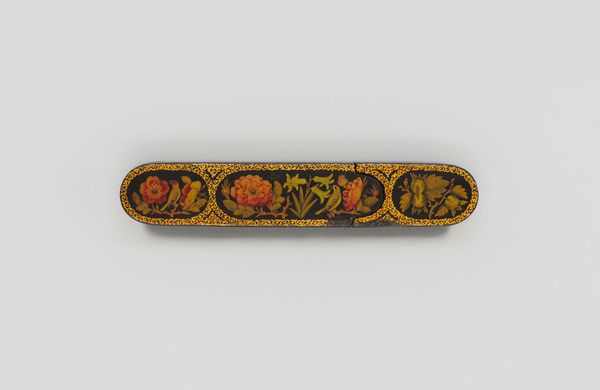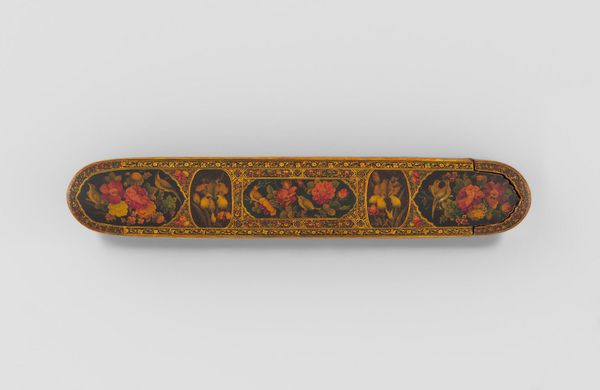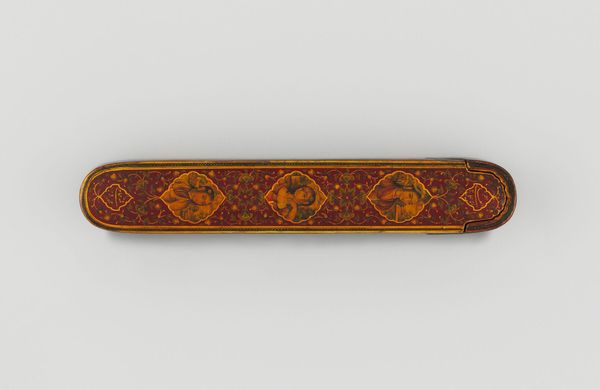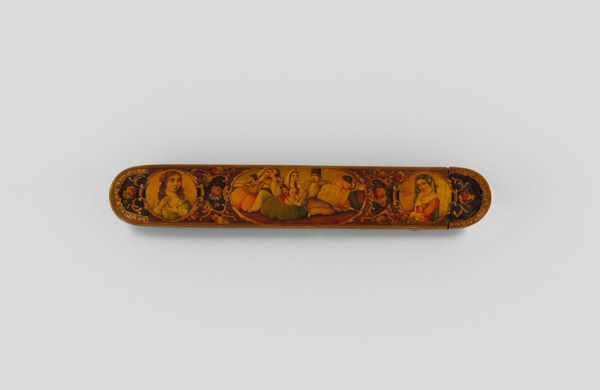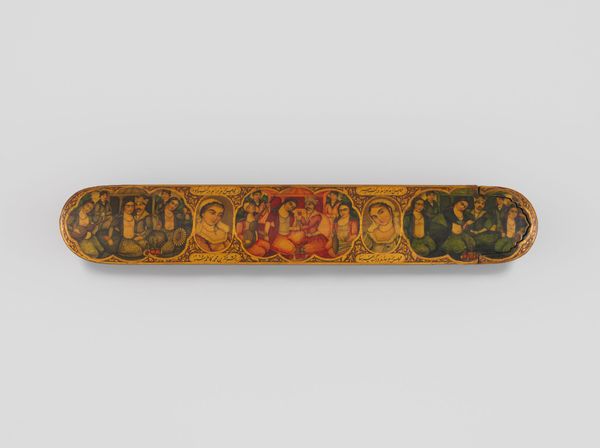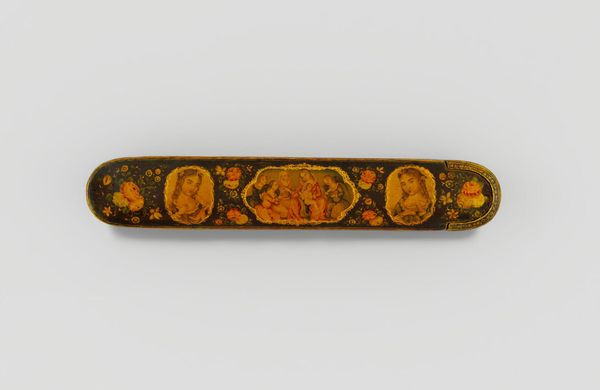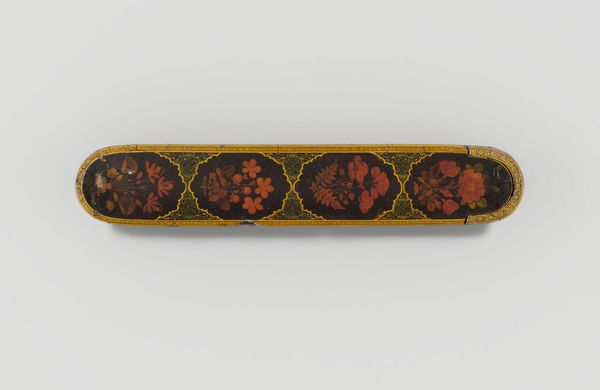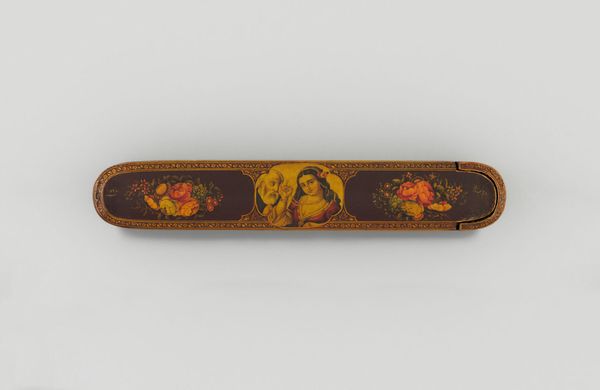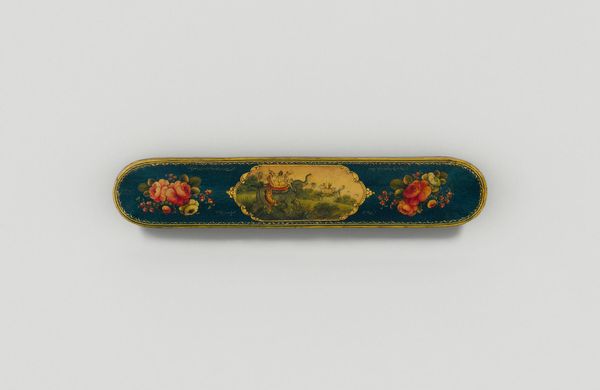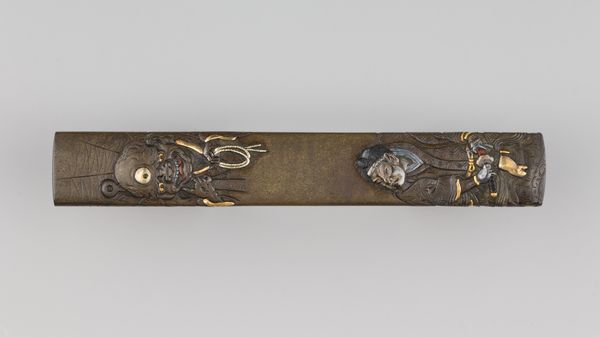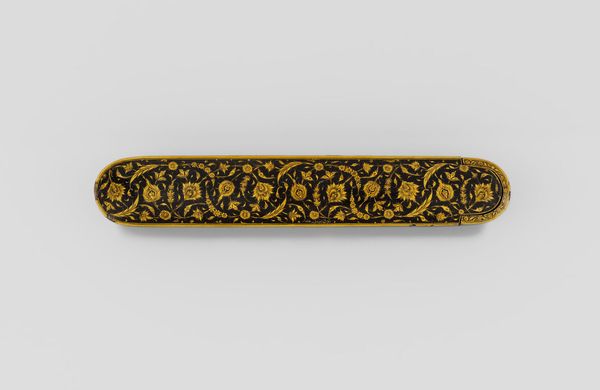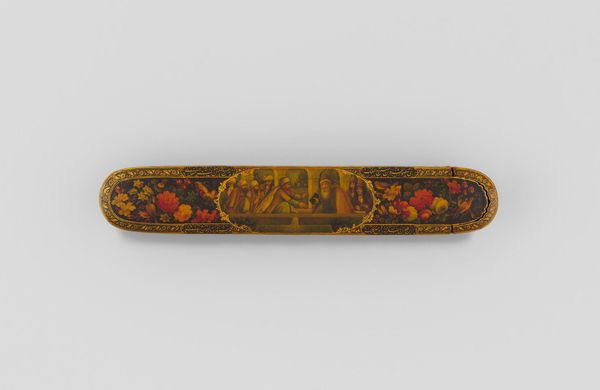
Dimensions: 3.6 Ã 3.3 Ã 19.8 cm (1 7/16 Ã 1 5/16 Ã 7 13/16 in.)
Copyright: CC0 1.0
Curator: This delicately rendered pen box, attributed to Muhammad Baqir, dates back to the late 18th century. Editor: It's striking how these European women, framed like jewels, seem utterly disconnected from their surroundings. Curator: Indeed. Baqir, working in Iran, was clearly influenced by European portraiture. We see it in the idealized features and classical garb. The box presents fascinating questions about cross-cultural artistic exchange. Editor: To me, these women become symbols of a specific kind of aspirational identity—European ideals as status symbols. Their representation on this object invites conversation about class, desire, and gender in that society. Curator: Precisely, and the choice of a pen box as the medium—an object associated with literacy and power—further complicates the narrative. What public role did art play at this time? Editor: It’s fascinating to consider the politics of this imagery, given the historical context of colonialism and burgeoning trade relations. I wonder how viewers in Baqir's time would have seen this. Curator: The nuances of cultural appropriation and aesthetic admiration are deeply embedded. Editor: An unexpectedly resonant and thought-provoking object, inviting us to look closer at historical power dynamics.
Comments
No comments
Be the first to comment and join the conversation on the ultimate creative platform.
